Anil Radhakrishna Kumble was a former Indian cricket captain, coach, and commentator who played Test cricket and One Day International cricket over an 18-year international career. He is best known for his flipper and his unconventional bowling style. It is widely regarded that he is one of the top leg spinners in Test cricket history, having taken 619 wickets and ranked fourth all-time for wickets taken in Test cricket.
To date, he has taken the most wickets for India in both ODIs and Tests. Furthermore, he is only second to Muttiah Muralitharan and third to Shane Warne in international wicket-taking. The fact that he could make the ball bounce made him a difficult bowler to face, earning him the nickname 'Jumbo'.
| Born: 17 Oct 1970 | Nationality: Indian | Years Active: (1990–2008) | Birth Place: Banglore, Karnataka |
| Height: 6ft 1in | Role: Bowler |
| Batting Style: Right-handed | Bowling Style: Right-arm Leg-break |
| Nickname: Jumbo |
Kumble was born to Krishna Swamy (father) and Saroja Kumble (mother) in Bangalore, Karnataka. His father was a management consultant and his mother was a housewife. He has a brother named Dinesh Kumble.
He is married to Chethana Kumble and has three children - Mayas Kumble, Aaruni Kumble, and Svasti Kumble. His mother tongue is Kannada.
In his early years, Kumble got highly influenced by B.S. Chandrasekhar (former Indian cricketer from Karnataka) and developed an early interest in cricket. Then, Anil joined a cricket club named 'Young Cricketers'. In 1991-92, he graduated with a 'Bachelor of Science in Mechanical Engineering' from 'Rashtreeya Vidyalaya College of Engineering', Bangalore.
Kumble debuted for Karnataka against Hyderabad on 30 November 1989. In addition, he began his career by supporting the Indian national team to victory with impressive 13/138 figures, leading to a tour of Zimbabwe and South Africa.
Anil Kumble's debut match in One Day International (ODI) cricket was against Sri Lanka at Sharjah during the 1990 Australasia Cup. In that match, he took 1 wicket and gave 42 runs.
The first Test of his test career was played at Manchester in August 1990 against England. In that match, Anil took 3 wickets and gave 105 runs in 43 overs out of which 7 were maiden ones.
In terms of Indian bowling records, Kumble holds everyone. The batsman always had a nightmare with his googly and subtle variations in flight.
As a quality spinner, he made his mark during the 1992 India tour of South Africa. He finished as the highest wicket-taker of the Indian side, including his 6/53 figures in the second test against the South Africans. Also, in 1999, he became the second bowler in Test history to take ten wickets in an innings, a feat only accomplished by Jim Laker sixty years earlier.
Kumble's phenomenal sportsmanship was demonstrated in Antigua when he bandaged his fractured jaw and returned to the field to deliver a stirring spell. The 6/12 he bowled against the West Indies in 1993 remains the Indian bowler's most impressive performance ever.
Despite Anil Kumble's career achievements, there are bound to be some low points or controversies in every person's life.
As a result of his never-say-die attitude, he was named India's Test captain in 2007. During his 14 tests as India's captain, he won three, lost five, and drew six tests.
In his first series against archrival Pakistan, he won 1-0. It was India's first home victory over Pakistan in 27 years. In 2008, he also led India to a remarkable victory over Australia.
Anil Kumble announced his retirement from ODIs after India's disappointing World Cup exit in the Caribbean Islands in 2007. He continued to play the longer format of the game but retired from international cricket late in the third test against Australia in Delhi on 28 October 2008.
He was appointed as Chairman of the ICC Cricket Committee on 12 October 2012 after retiring from cricket.
In June 2016, Kumble was appointed head coach of the Indian cricket team and served in that role for about a year. While he served as a coach for only a short time, Kumble guided India to the number one position in the test rankings.
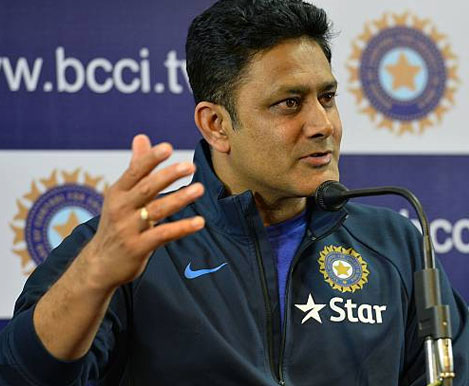
Former cricketer Malcolm Marshal was the fast bowler of all time. He was a fearsome bowler and dangerous middle-order batsman. In reference to Marshall's bravery, who despite breaking his hand continued to play while wearing a protective plaster. Marshall bowled to take seven wickets and batted to smash a one-handed boundary.
| ODI | |
|---|---|
| Matches: 271 | Run Scored: 938 |
| Run Given: 10412 | |
| Bowling Average: 30.90 | Top Numbers: 6/12 |
| 10W/5W: 0/2 | Wickets: 337 |
| T20 | |
|---|---|
| Matches: 79 | Run Scored: 1899 |
| Batting Average: 27.93 | Top Score: 117 |
| 200/100/50: 0/2/14 | Wickets: 20 |
| Test | |
|---|---|
| Matches: 132 | Run Scored: 2506 |
| Run Given: 18355 | |
| Bowling Average: 29.65 | Top Numbers: 14/149 |
| 10W/5W: 8/35 | Wickets: 619 |
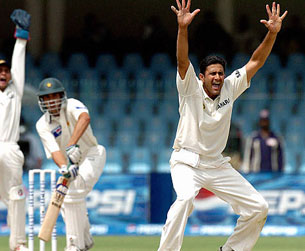
Sachin Tendulkar of India fields during the 2011 ICC Cricket World Cup Group B match between India and the Netherlands at Feroz Shah Kotla stadium on March 9, 2011 in Delhi, India.
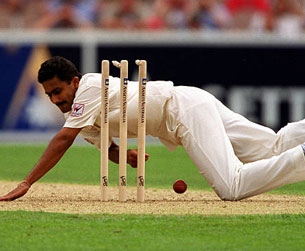
Sachin Tendulkar of India raises his bat on scoring his century during the Group B ICC World Cup Cricket match between India and South Africa at Vidarbha Cricket Association Ground on March 12, 2011 in Nagpur, India.
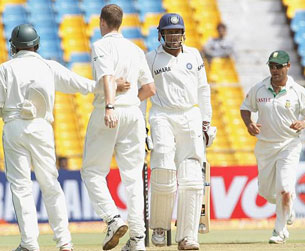
Sachin Tendulkar of India hits out watched by wicketkeeper Matt Prior of England during day five of the 4th npower Test Match between England and India at The Kia Oval on August 22, 2011 in London, England.
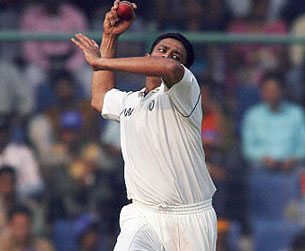
Sachin Tendulkar reach the iconic landmark of 100 international centuries against Bangladesh in the Asia Cup in 2012
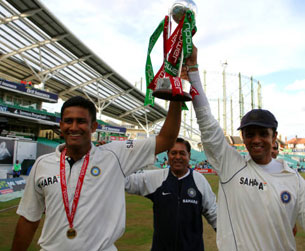
Sachin's first Test century
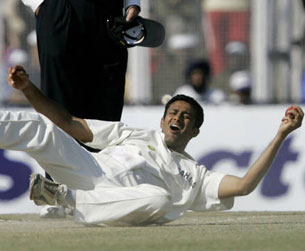
Sachin Tendulkar’s dream to hold the World Cup in his hands and in 2011 it finally happened.